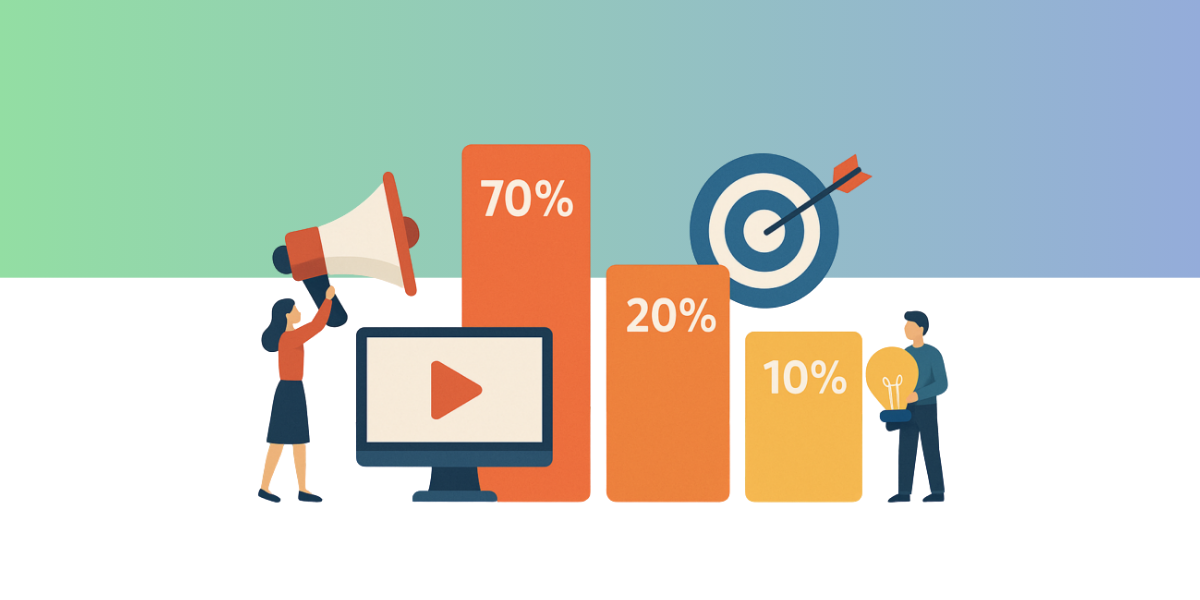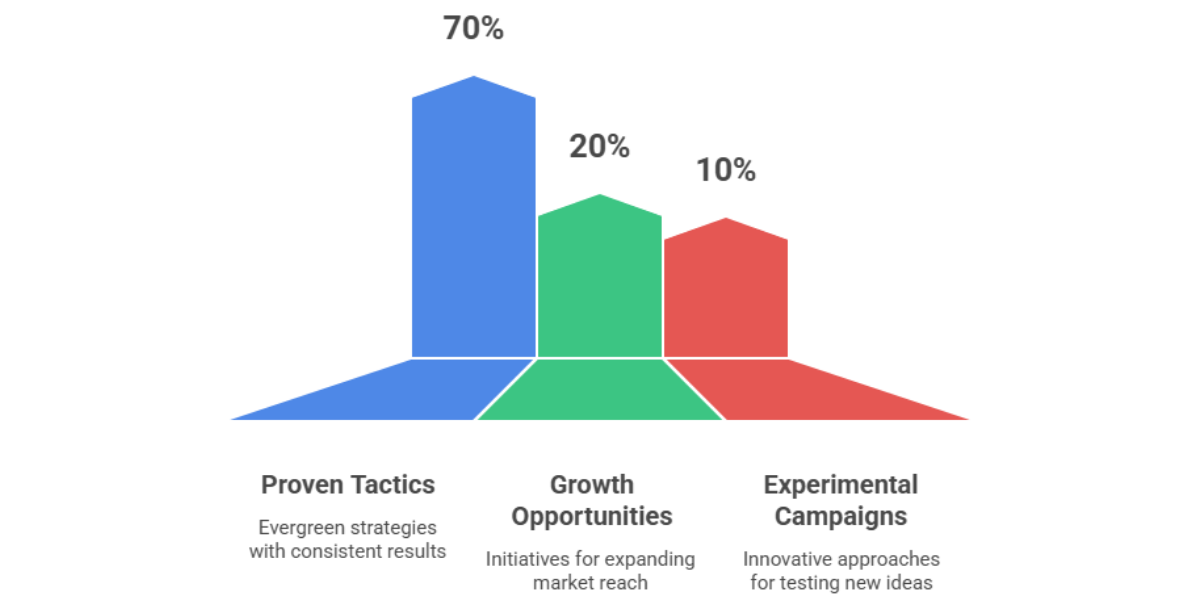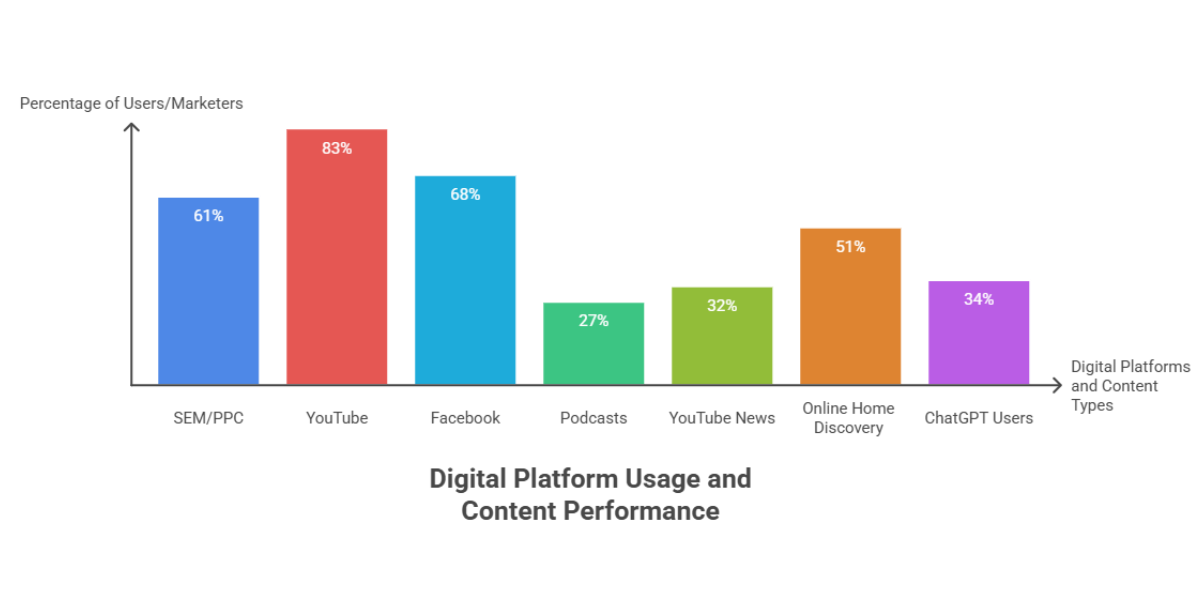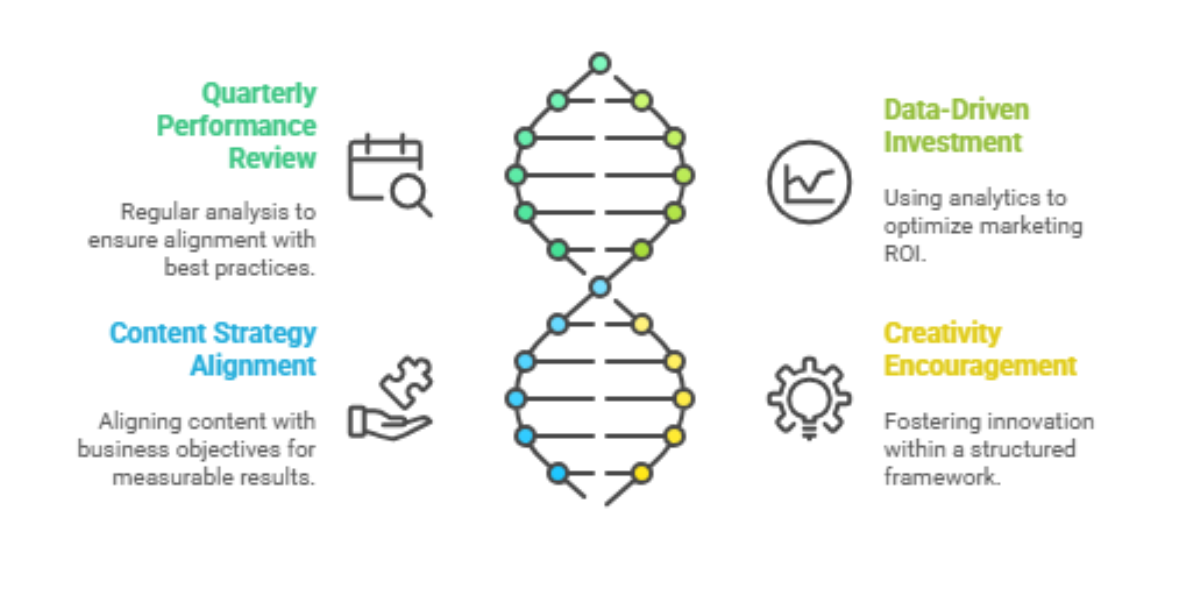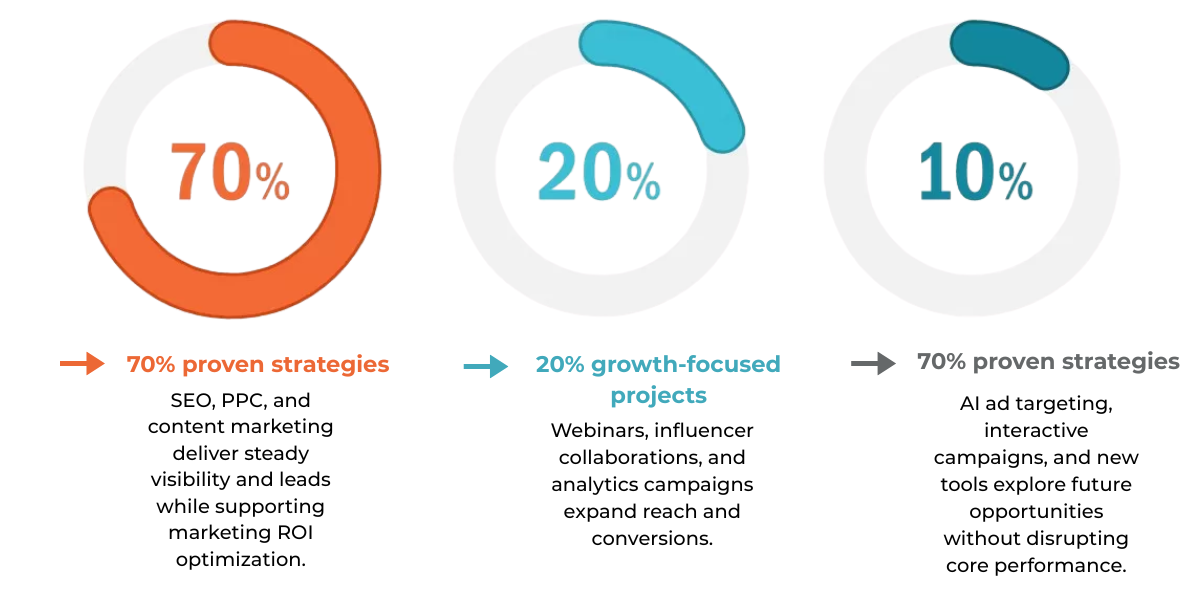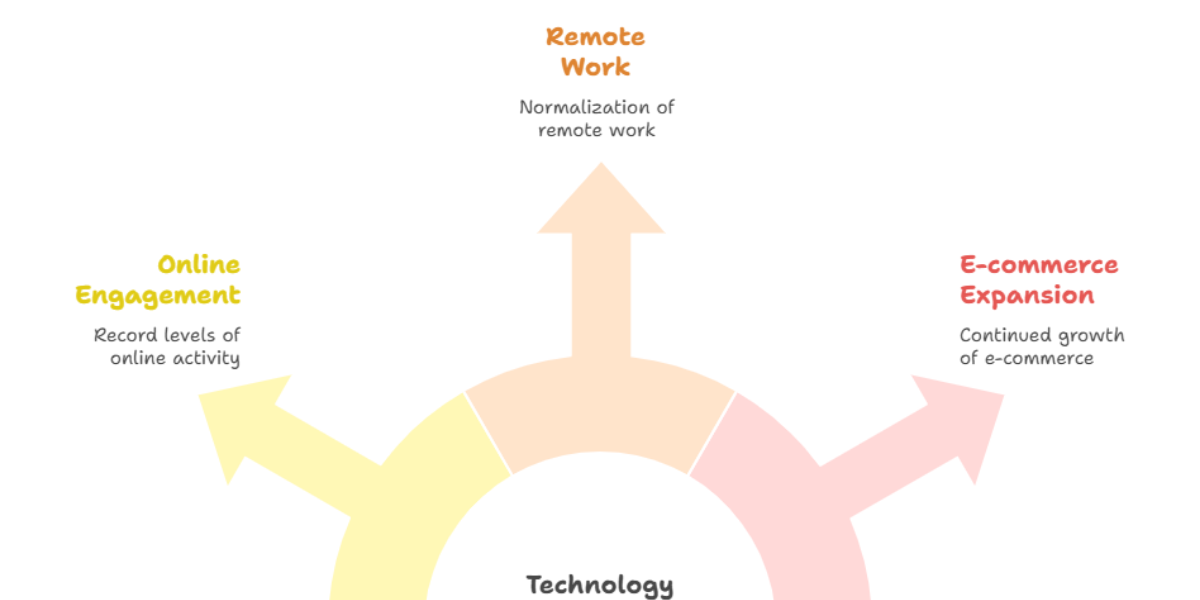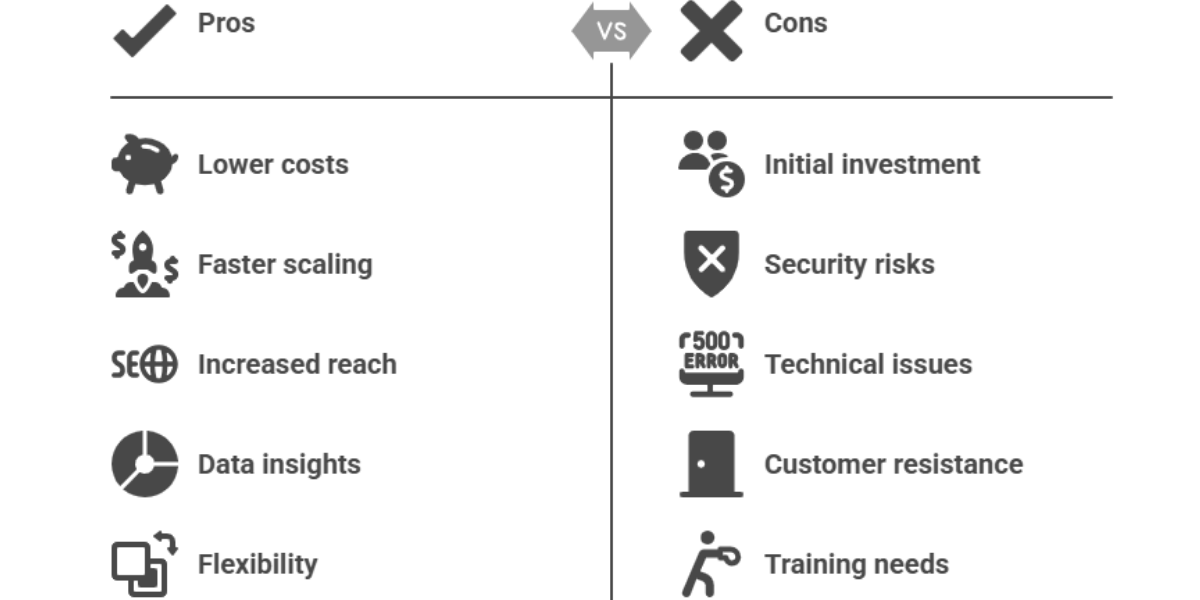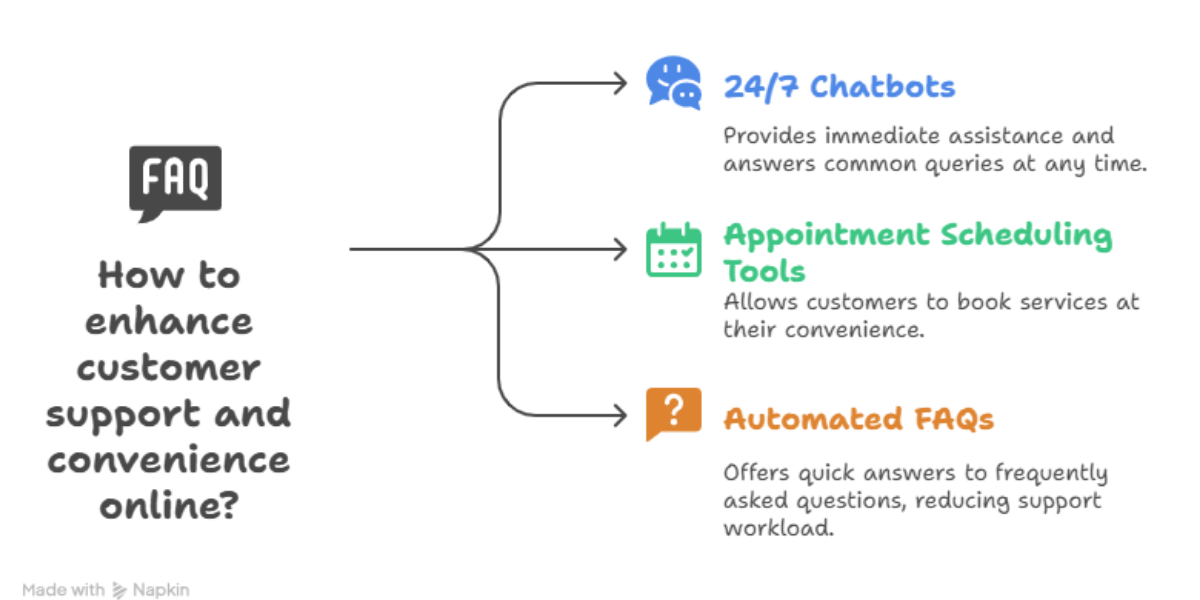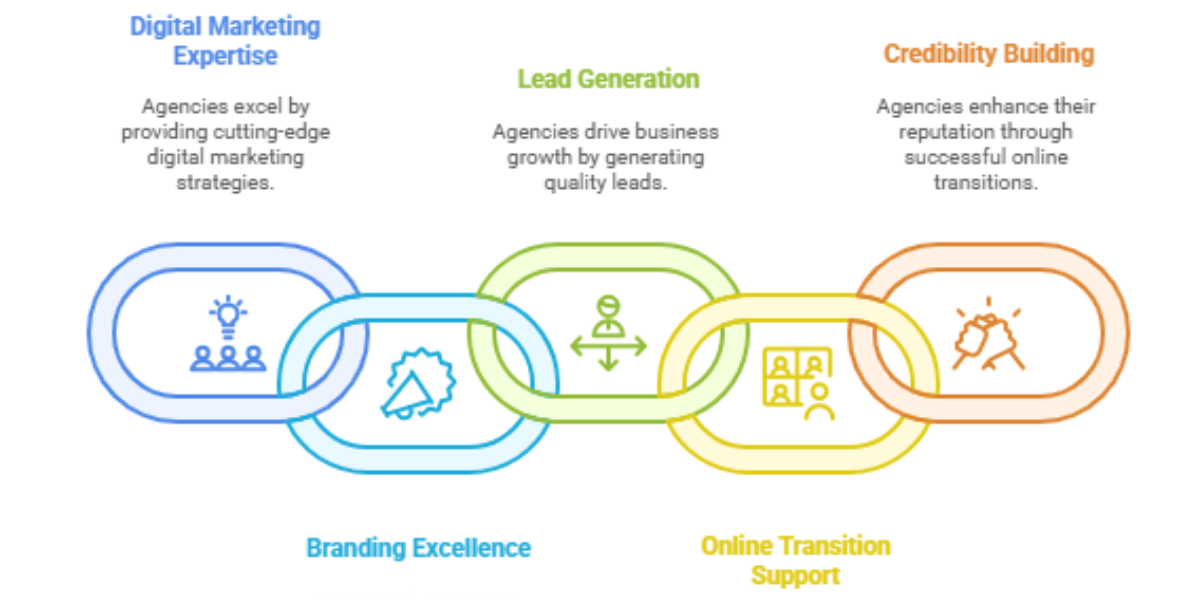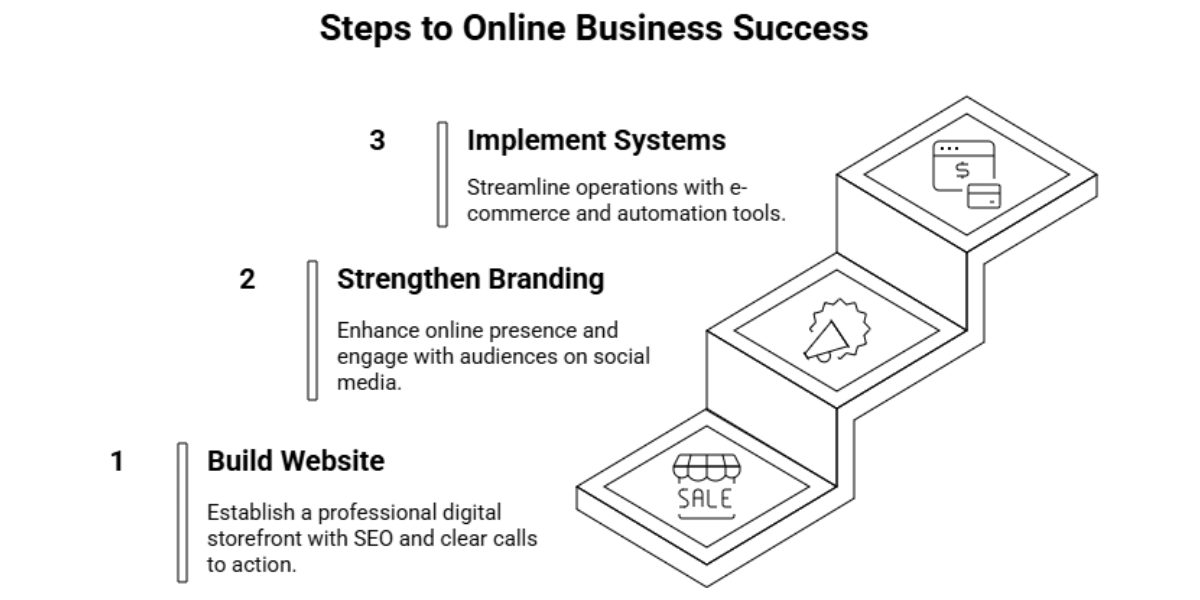For small and mid-sized businesses, digital advertising brings a blend of great opportunities and significant challenges. While it opens access to vast online audiences, the real test is reaching the right people, improving engagement, and accurately tracking ROI in digital advertising. Many organizations struggle to allocate budgets effectively, unsure which campaigns are driving measurable results.
This is where advanced analytics in digital advertising makes the difference. By transforming raw consumer data into clear insights, it enables smarter decisions, more personalized campaigns, and consistently high-performing strategies. Whether you manage a law firm, an e-commerce store, a healthcare clinic, or a local service business, advanced analytics can deliver growth and efficiency.
Key Ways Advanced Analytics Powers Digital Advertising
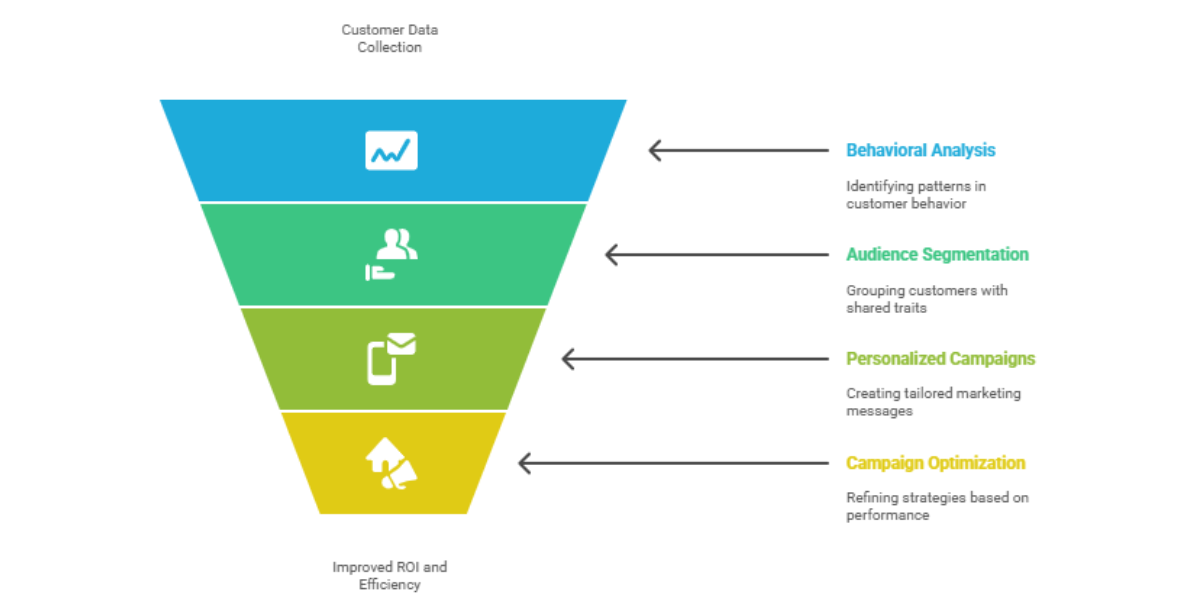
Competing in a fast-paced marketplace requires insight and precision. Advanced marketing analytics gives advertisers the ability to design data-driven advertising strategies that engage the right audience at the right time. With tools such as machine learning, customer behavior analytics, and predictive analytics marketing, campaigns become sharper, more targeted, and more efficient.
Deeper Customer Understanding
The foundation of advertising success is customer insight. Customer behavior analytics captures browsing patterns, clicks, and purchases, revealing preferences and habits.
- Behavioral Analysis: Analyzing website activity, purchase records, and app use highlights products and services that resonate most with consumers.
- Audience Segmentation: Machine learning groups audiences with shared traits, allowing behavioral targeting that lifts engagement and conversions.
This level of consumer data analysis ensures ads are relevant, timely, and meaningful.
Personalized Campaigns
Personalization has become central to effective marketing. Advanced analytics tools allow businesses to create tailored campaigns for distinct audience groups.
- Tailored Content: AI enables unique website experiences and emails reflecting past browsing or purchases.
- Personalized Offers: Studying shopping behavior allows advertisers to send product suggestions and discounts that match individual interests.
These personalized campaigns help smaller businesses compete with larger companies by delivering one-to-one marketing experiences at scale.
Talk About Your Marketing Budget With Expert
Personalization & Consumer Expectations
- 74% of digital marketing leaders plan to increase investments in personalization, with budgets rising from 22% to 40% allocated to personalization.
- According to Accenture, 91% of customers are more likely to shop with brands that acknowledge, remember, and supply them with relevant offers and recommendations.
- According to industry research, 71% of consumers expect personalized interactions, and 76% feel frustrated when brands fail to deliver personalization.
Campaign Optimization
Real-time optimization is one of the most practical benefits of advanced analytics.
- Real-Time Bidding (RTB): Automated bidding ensures ad spend is efficient, delivering maximum ROI.
- Budget Allocation: With ad campaign optimization, resources are focused on channels that perform best, including Google Ads, Facebook Ads, and LinkedIn Ads.
- Performance Tracking: Monitoring CTR, CPC, and conversion rates helps refine campaigns and sharpen outcomes.
This cycle of review and adjustment turns marketing into a process of constant improvement.
Improved ROI and Efficiency
The ultimate goal is growth with profitability. Advanced analytics in digital advertising provides the insight to achieve this balance.
- Personalized Campaigns Drive Results: Personalized campaigns increase engagement by tailoring messages to audience preferences, which leads to better conversion rates and builds a deeper sense of loyalty among customers.
- Data-Driven Decisions Improve Clarity: Decisions supported by analytics reduce wasted spend, bring transparency to strategy, and allow businesses to focus on what consistently delivers measurable impact.
- Smarter Budget Distribution: Allocating budgets based on performance insights ensures resources are invested in the most effective areas, producing stronger returns and more sustainable growth.
The outcome is a higher ROI in digital advertising and a path to sustainable growth.
Digital Ad Spend & ROI Statistics
- Digital marketing is over $734.6 billion in global ad spending. As a result, 58% of small businesses now rely on digital channels.
- Businesses achieve an average return of $5 for every $1 spent on digital marketing campaigns.
- Email marketing delivers an ROI of 4,200%—that is, $42 returned per $1 spent.
- Most digital marketers aim for a 5:1 ROI ratio—earning $5 for every $1 invested.
Leveraging Customer Behavior Analytics for Smarter Targeting
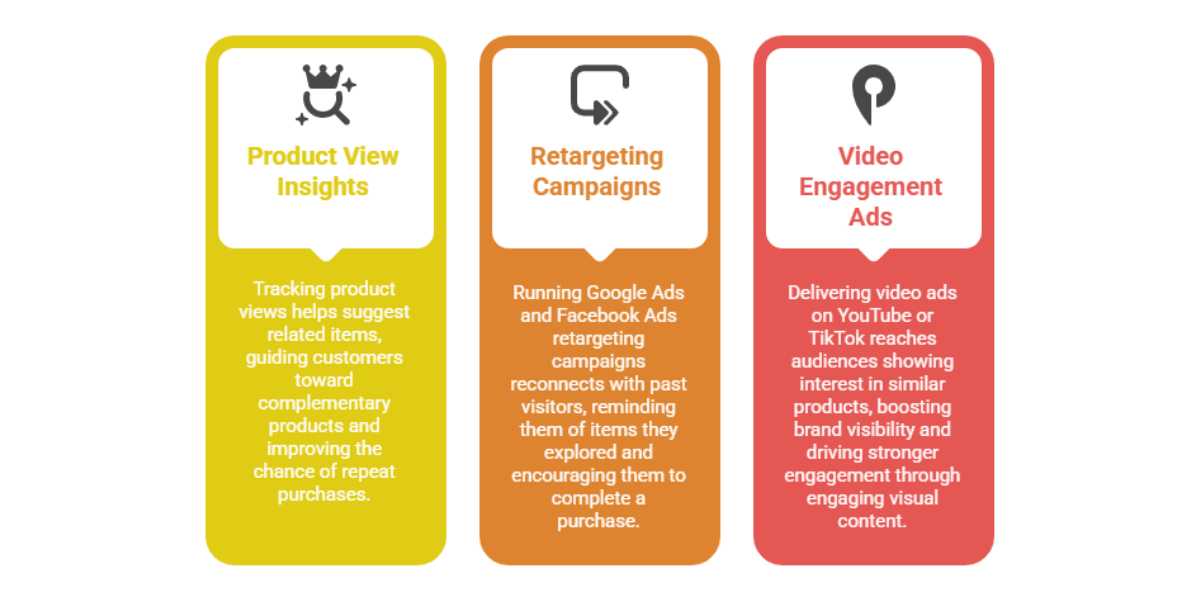
Understanding customer behavior online is a valuable advantage. With customer behavior analytics, businesses can see what drives interest and intent, then design campaigns that match expectations. Whether forecasting purchases or improving ad placement, the real power of analytics lies in sharper targeting.
Behavioral Targeting in Practice
Behavioral targeting anticipates customer needs by analyzing online actions across websites, apps, and social platforms.
- Product View Insights: Tracking product views in e-commerce stores helps suggest related items, guiding customers toward complementary products and improving the chance of repeat purchases.
- Retargeting Campaigns: Running Google Ads and Facebook Ads retargeting campaigns reconnects with past visitors, reminding them of items they explored and encouraging them to complete a purchase.
- Video Engagement Ads: Delivering video ads on YouTube or TikTok reaches audiences showing interest in similar products, boosting brand visibility and driving stronger engagement through engaging visual content.
This approach ensures ads are delivered with context, making them more effective.
Predictive Analytics Marketing
Predictive analytics marketing forecasts future behavior by studying past trends. Businesses can anticipate purchase timing, preferred products, and even customer churn.
For B2B providers and e-commerce brands, predictive insights support proactive marketing, offering the right solution before the client initiates contact.
Talk About Your Marketing Budget With Expert
Real-World Applications
Practical examples highlight how adaptable advanced analytics can be:
- Law firms identify clients searching for specific legal services.
- Healthcare clinics forecast appointment demand and adjust ad strategies.
- Real estate agents focus on prospects most likely to purchase.
- Small businesses and freelancers use PPC services for affordable campaigns.
Across industries, data-driven tactics allow businesses to stay competitive and grow with confidence.
Optimizing Multi-Channel Advertising Campaigns
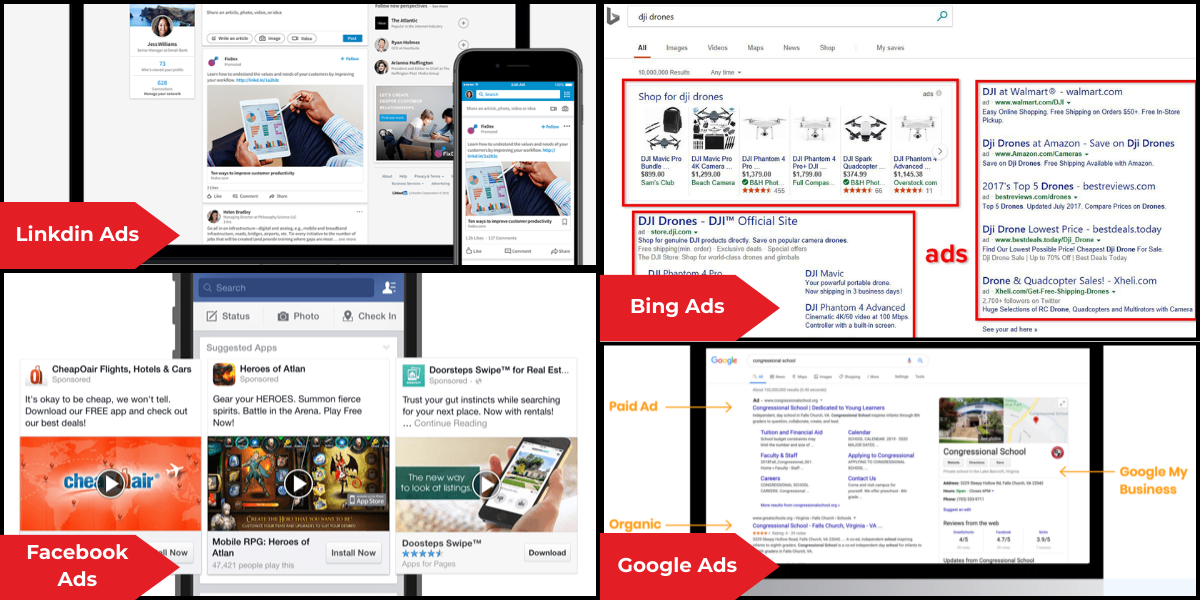
Customers engage with brands across many platforms. Optimizing campaigns across these channels ensures messages remain consistent and reach the intended audience. Advanced analytics integrates insights from multiple sources, creating unified strategies.
Cross-Platform Integration
Effective integration connects insights across advertising platforms:
- Search Intent Advertising: Google Ads and Bing Ads capture user search intent, allowing businesses to reach customers at the precise moment they are looking for relevant products or services. This makes campaigns more direct and highly effective in driving conversions.
- Refined Social Targeting: Facebook Ads and LinkedIn Ads provide advanced targeting options that help businesses connect with the right demographics, interests, and professional groups. These tools increase relevance and engagement, ensuring messages land with the right audience.
- Storytelling Through Video: Video ads build awareness through compelling visual content that resonates emotionally with viewers. Platforms like YouTube and TikTok give brands a chance to showcase their story, improve visibility, and create deeper connections.
Cross-platform insights prevent wasted spend and strengthen brand voice.
Talk About Your Marketing Budget With Expert
Attribution Modeling
Different platforms contribute in different ways. Attribution modeling reveals which touchpoints matter most. A customer might see a Facebook post before making a purchase through a Google search.
By applying attribution modeling, businesses invest wisely and maximize ROI in digital advertising.
PPC Audit and Continuous Optimization
Conducting a PPC audit highlights which ads succeed and which fail. Continuous optimization includes:
- Targeting Refinement: Refining targeting connects with valuable audiences by analyzing demographic and behavioral data. This ensures ads reach individuals most likely to convert, improving campaign quality and efficiency.
- Creative Asset Refresh: Refreshing creative assets brings a stronger appeal by testing new visuals, messaging, and formats. Updated content attracts attention, keeps campaigns relevant, and prevents audience fatigue.
- Budget Adjustment Strategies: Adjusting budgets toward the most effective campaigns ensures resources are concentrated on ads delivering measurable results. This practice maximizes ROI and sustains long-term performance.
Routine audits help businesses adapt to evolving algorithms and consumer trends.
Big Data Analytics and the Future of Digital Marketing
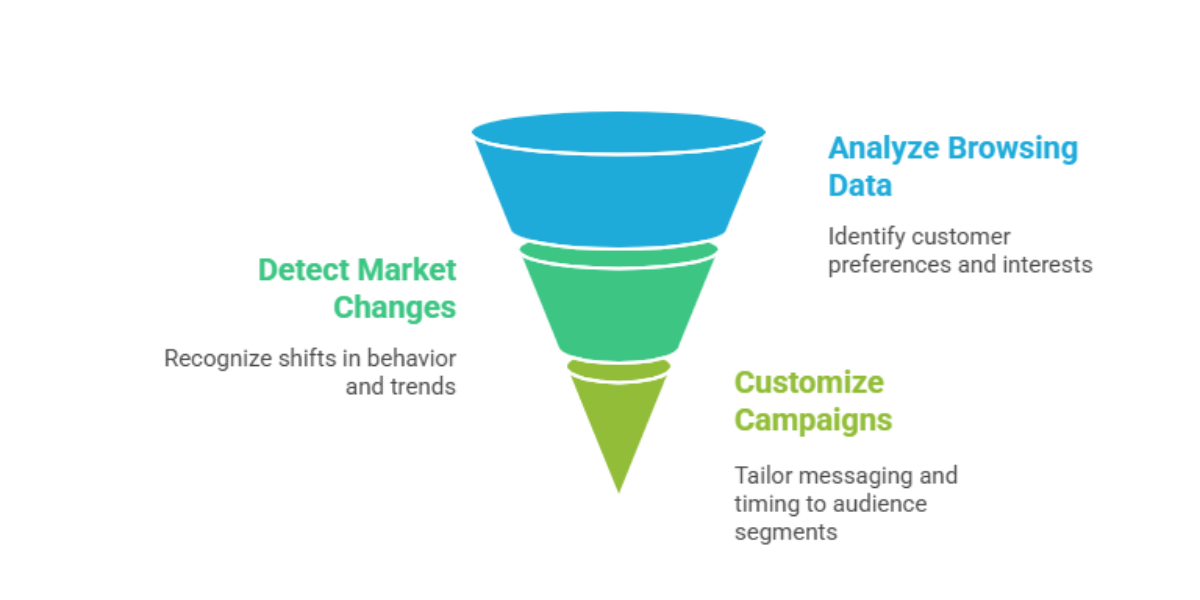
As consumer behavior becomes increasingly complex, big data marketing insights are vital. By analyzing large datasets, businesses can forecast customer needs and market shifts with high accuracy.
Enhanced Consumer Insights
Big data provides foresight that moves businesses from reaction to anticipation.
- Browsing Data Insights: Forecast customer preferences by studying browsing data to identify interests, refine offers, and deliver messages that match user intent. This analysis helps predict future demand and supports strategic planning.
- Market Change Detection: Detect market changes before competitors respond by tracking shifts in behavior, seasonal trends, and emerging interests. Early recognition enables faster adjustments and stronger positioning.
- Precision Campaign Customization: Customize campaigns with precise detail, tailoring messaging, creative elements, and timing to each audience segment. This ensures relevance, higher engagement, and measurable impact.
This level of analysis allows marketing teams to act with confidence.
Advanced AI and Machine Learning Applications
AI-powered systems are transforming campaign delivery.
- Automated Ad Placement: Automated ad placement ensures ads appear at the right moment, improving visibility and increasing the chances of reaching customers when they are most receptive. This efficiency maximizes exposure without unnecessary spending.
- Dynamic Content Adaptation: Dynamic content adapts to each user profile by tailoring messaging and visuals to personal interests. This creates more relevant experiences that capture attention and encourage stronger engagement.
- Intelligent Bidding Strategies: Intelligent bidding strategies optimize spending by automatically adjusting bids based on performance data. This approach reduces waste, ensures cost-effectiveness, and improves overall campaign efficiency.
By using AI in digital advertising, businesses produce personalized campaigns at scale.
AI Adoption & Predictive Tools
- 71% of marketers plan to invest at least $10 million in AI over the next three years (up from 57% in 2024).
- 83% of chief marketing officers express optimism about AI’s potential (a 5-point increase from the prior year).
Opportunities for Small and Mid-Sized Businesses
The accessibility of advanced marketing analytics has changed the playing field. Tools once limited to large corporations are now within reach of startups and local providers.
For SMBs, this means:
- Affordable Predictive Analytics: Predictive analytics is now available without high costs, giving small and mid-sized businesses access to tools that forecast trends and customer behavior. This helps them plan effectively without straining their budgets.
- Performance Marketing Improvements: Campaign improvements come through affordable performance marketing tools that allow businesses to monitor data, refine targeting, and strengthen ROI. These tools give marketers the power to make more informed decisions by providing clear insights.
- Competitive Advantage: The ability to compete directly with larger competitors is now possible, as analytics tools level the playing field. Small businesses can run efficient, optimized campaigns that match the reach and impact of enterprise-level advertising.
Talk About Your Marketing Budget With Expert
Using Analytics to Assess Digital Marketing Effectiveness
Running a campaign is only the beginning. Measuring its impact is essential for growth. Advanced analytics in digital advertising provides clarity through accurate tracking of key metrics.
Website Analytics for Campaign Evaluation
Websites play a crucial role in digital strategies. Measuring:
- Traffic Source Analysis: Tracking traffic sources shows where visitors come from, such as search engines, social media, or referrals. This helps pinpoint the channels that deliver the most qualified leads and highlights where marketing efforts should be focused.
- Bounce Rate Monitoring: Examining bounce rates highlights how many visitors leave after viewing a single page. A high rate can signal issues with relevance, content quality, or user experience, prompting improvements to retain audience attention.
- Conversion Rate Evaluation: Keeping an eye on conversion rates is crucial because it shows how well a website is doing at turning visitors into leads or customers. Understanding this metric helps refine landing pages, offers, and calls to action to drive stronger results.
- Session Duration Tracking: Measuring average session duration shows how long visitors stay on a site. Longer sessions often indicate engaging content and better user experiences, while shorter sessions suggest areas needing optimization.
Social Media, E-Commerce, and App Analytics
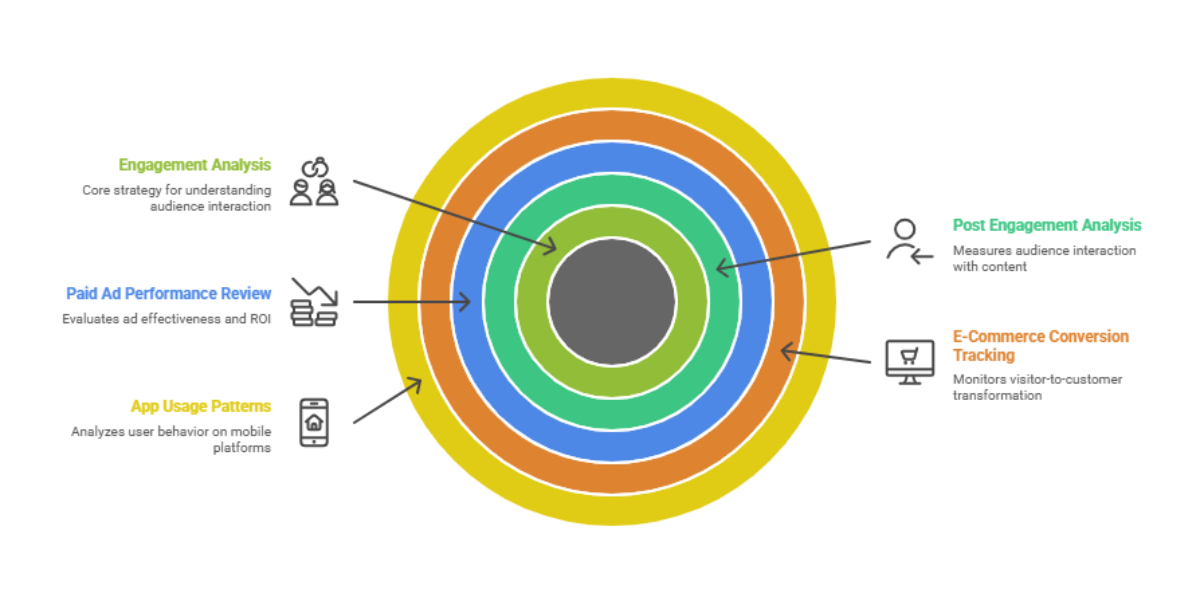
Social networks and apps generate huge amounts of engagement data. By evaluating:
- Post Engagement Analysis: Measuring engagement levels on posts reveals how well audiences interact with content. High engagement signals relevance and helps guide content strategies that attract and retain attention.
- Paid Ad Performance Review: Studying the performance of paid ads highlights which creatives and formats generate results. This evaluation allows marketers to allocate spend to the ads that deliver measurable ROI.
- E-Commerce Conversion Tracking: Monitoring conversion rates is important because it indicates how successfully a website transforms visitors into leads or customers. Insights here can refine checkout processes, product pages, and offers.
- App Usage Patterns: Analyzing patterns in app use shows how often and how long customers engage with mobile platforms. This data informs design improvements, user experience enhancements, and targeted push campaigns.
Social & Influencer Advertising Trends
- The global social media ad market is set to grow by 12% this year.
- 59% of marketers plan to improve influencer partnerships compared to 2024.
- 76% of social media users say content influenced a purchase decision; for Gen Z, that jumps to 90%.
- 41% of Gen Z use social media as their top source for information, ahead of search engines and AI.
KPIs and ROI Measurement
Key performance indicators reveal campaign health:
- Click-Through Rate (CTR): This metric gauges how many users click on an ad in relation to how many people viewed it. A higher CTR reflects strong relevance and effective messaging that captures attention.
- Cost Per Click (CPC): CPC shows how much is paid each time someone clicks an ad. Monitoring this helps control budgets and compare performance across platforms.
- Conversion Rate: This metric indicates how many visitors complete a desired action, such as signing up or making a purchase. Strong conversion rates highlight effective targeting and persuasive content.
- Cost Per Lead: This measures the cost of acquiring a new lead. It helps businesses evaluate the efficiency of campaigns and adjust strategies for more affordable growth.
- Return on Investment (ROI): ROI reveals how profitable advertising campaigns are compared to their costs. A positive ROI confirms that the strategy is driving sustainable business growth.
Advanced dashboards deliver real-time monitoring so businesses can adapt strategies quickly.
Talk About Your Marketing Budget With Expert
Actionable Steps to Start Using Advanced Analytics
Adopting analytics may seem complex, but breaking it into clear steps makes it manageable.
Start with Core Metrics
When it comes to measuring success, it’s all about focusing on the metrics that truly matter to your business goals. An e-commerce store may emphasize conversions, while a law firm may value cost per lead. Tracking the right KPIs ensures clarity.
Choose the Right Tools
Selecting effective tools is essential. Businesses can benefit from:
- Search Campaign Tools: Google Ads and Bing Ads are effective for reaching customers who are actively searching, giving businesses direct access to potential buyers at the moment of intent.
- Social Outreach Platforms: Facebook Ads and LinkedIn Ads allow businesses to target specific demographics and professional groups, strengthening brand awareness and generating high-quality leads.
- PPC Audit Services: Regular PPC audit services help identify weak spots in campaigns, refine targeting, and ensure ad spend is focused on strategies that deliver measurable ROI.
Many companies also work with a digital marketing agency or use white-label solutions for expert guidance.
Test, Learn, and Optimize Continuously
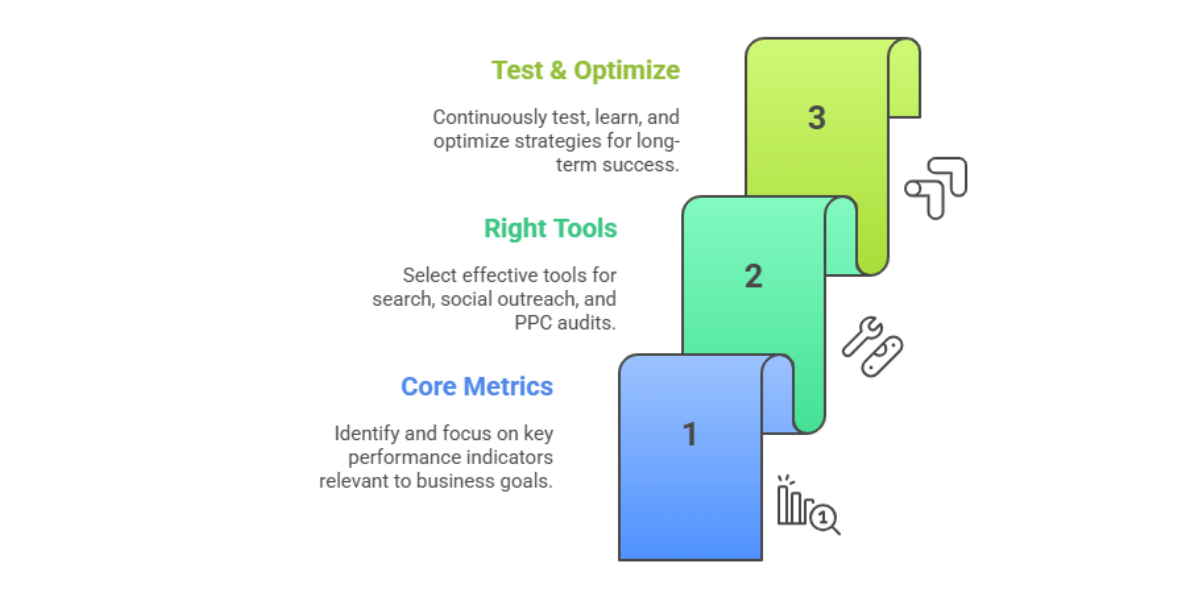
Long-term success depends on ongoing adjustments:
- A/B Testing on Ad Creatives: Running A/B tests on ad creatives allows businesses to compare different versions of ads, identify which messages or visuals perform best, and refine campaigns based on data-driven results. This continuous testing improves engagement and conversion rates.
- Predictive Analytics for Demand: Using predictive analytics marketing to anticipate future demand helps businesses prepare for customer needs before they arise. By studying historical data, marketers can forecast trends and position offers that match evolving consumer behavior.
- Enhanced Behavioral Targeting: Improving behavioral targeting to enhance relevance ensures ads are delivered to the right audiences at the right time. By leveraging user activity and preferences, businesses increase relevance, engagement, and campaign efficiency.
Constant monitoring ensures strategies evolve with customer expectations.
Talk About Your Marketing Budget With Expert
How SpreadMe Digital Helps Businesses Grow Through Smart Analytics
SpreadMe Digital helps businesses harness advanced analytics in digital advertising to achieve real growth. We turn data into practical strategies for small and mid-sized companies.
We apply customer behavior analytics to study audiences, segment them, and optimize campaigns in real time. Our approach connects businesses with the right people, minimizes wasted spend, and improves ROI.
Every client is different, which is why we design tailored campaigns backed by AI. From e-commerce to healthcare to legal services, we design ads that engage and convert.
Working with SpreadMe Digital provides access to performance marketing tools, PPC services, and digital marketing agency expertise. We deliver audits, continuous optimization, and tailored strategies that keep businesses competitive.
Conclusion
Advanced analytics in digital advertising has become essential. It sharpens targeting, strengthens personalization, optimizes budgets, and raises ROI. From predictive analytics marketing to ad campaign optimization, the opportunities are significant.
For B2B providers, local businesses, and e-commerce brands, the path forward is clear: integrate analytics into every marketing effort. Whether through campaign audits, new tools, or support from a digital marketing agency, the time to act is now.
With analytics guiding each decision, small businesses can compete successfully, delivering messages that connect with the right audience and creating sustainable growth.
Ready to unlock growth with data-driven strategies? Partner with SpreadMe Digital today and transform your digital advertising into measurable success.




